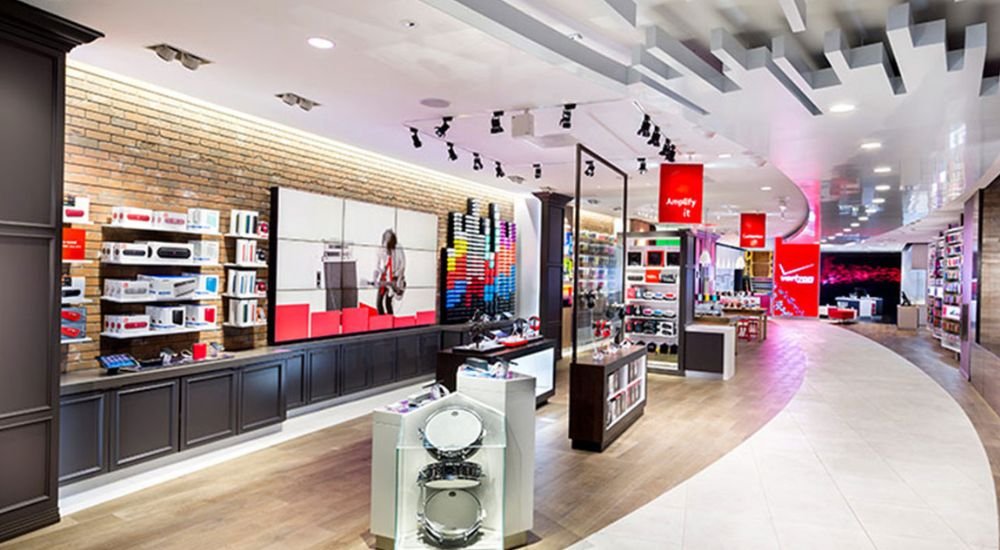How Departmental Stores Shaped the Way We Shop Today
Have you ever walked into a store that has everything from clothing to electronics to groceries? That’s the magic of departmental stores! They are a crucial part of our shopping experience and have been for decades. Let’s dive into the fascinating world of departmental stores, from their history to their evolving role in modern retail.
What is a Departmental Store?
A departmental store is a large retail establishment offering a wide variety of products under one roof. These stores are typically divided into different sections or “departments” such as clothing, electronics, home decor, and more. This allows customers to enjoy a convenient, one-stop shopping experience.
History of Departmental Stores
The concept of departmental stores isn’t new; in fact, it dates back to the mid-19th century. The idea revolutionized retail, creating a space where customers could find everything they needed in one place. Departmental stores transformed shopping from a mundane task into a leisurely activity. Prior to their emergence, shopping was mostly functional. However, with the rise of these stores, shopping became more about the experience—browsing through diverse departments, discovering new products, and enjoying customer service.
Major Innovations in Departmental Stores
From escalators to fitting rooms and catalog shopping, departmental stores were at the forefront of retail innovation. These innovations didn’t just make shopping easier; they elevated it to a whole new level of convenience and luxury. The Industrial Revolution played a key role in the rise of departmental stores. With the growth of mass production and transportation, retailers could offer a wide variety of goods to an expanding middle class.
Types of Departmental Stores
There’s no one-size-fits-all when it comes to departmental stores. Let’s break down the different types.
Traditional Departmental Stores
These are the classic brick-and-mortar stores that offer a range of products, often including higher-end brands and luxury items. Think Macy’s or Harrods.
Specialty Departmental Stores
Specialty stores focus on specific categories such as electronics, sportswear, or beauty products. While they still offer a variety of items, they are more niche compared to traditional departmental stores.
Discount Departmental Stores
Popular with budget-conscious shoppers, discount departmental stores offer products at lower prices by cutting down on extra services. Examples include Target and Walmart.
Online Departmental Stores
In recent years, online platforms have revolutionized departmental stores, offering customers a similar experience to in-store shopping, but from the comfort of their homes. Amazon is a prime example of this shift.
The Key Features of Departmental Stores
There are several reasons why people are drawn to departmental stores. Here are a few key features that set them apart. Departmental stores are known for offering an extensive selection of products. You can find everything from groceries to high-end fashion, all under one roof. Who doesn’t love convenience? Departmental stores make it easier for customers to shop for various categories without having to go to multiple stores. This is perhaps the biggest appeal of departmental stores. Whether you’re picking up groceries or buying a new wardrobe, everything is available in one location. Good store design is critical for an enjoyable shopping experience. Departmental stores typically organize products by category, making it easy for customers to find what they’re looking for.
The Impact of Departmental Stores on the Economy
Beyond serving customers, departmental stores have a broader impact on the economy. These stores provide a significant number of jobs, from customer service representatives to stock clerks and store managers. By sourcing products from local suppliers, many departmental stores help drive growth for smaller businesses. Departmental stores are often a cornerstone of shopping districts and malls, contributing to economic development and urban expansion.
Challenges Faced by Departmental Stores
While departmental stores are beloved by many, they are not without challenges. The rise of online shopping has created stiff competition. E-commerce platforms offer convenience and lower prices, putting pressure on traditional departmental stores to innovate. With the convenience of online shopping and home delivery, many consumers prefer to shop from home rather than visiting a physical store. Running a large departmental store requires significant overhead, including rent, employee salaries, and utilities, which can cut into profits.
The Future of Departmental Stores
The retail landscape is changing, but departmental stores are adapting to survive. From self-checkout systems to virtual fitting rooms, technology is becoming an integral part of the shopping experience. Some stores are even using artificial intelligence to predict consumer preferences. Omni-channel retailing blends online and offline shopping experiences. Departmental stores are using mobile apps, websites, and social media to engage with customers across multiple platforms. Sustainability is becoming a major focus for departmental stores. More stores are adopting eco-friendly practices like reducing plastic usage, promoting reusable bags, and offering sustainable product lines.
Conclusion
Departmental stores have come a long way, evolving with the times to meet the changing needs of consumers. While they face challenges from online retail, they are adapting through technology, sustainability, and improved customer experiences. Whether you prefer the classic in-store experience or the convenience of online shopping, departmental stores will likely remain a key player in the retail world.
If you gained new insights from this article, explore our blog, Gimkit, for more enlightening content.














Post Comment